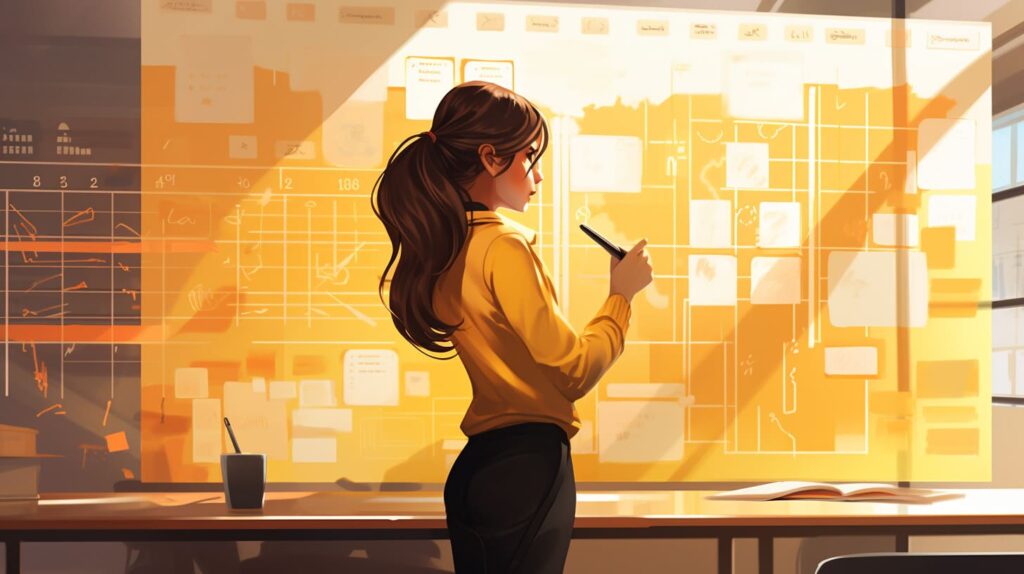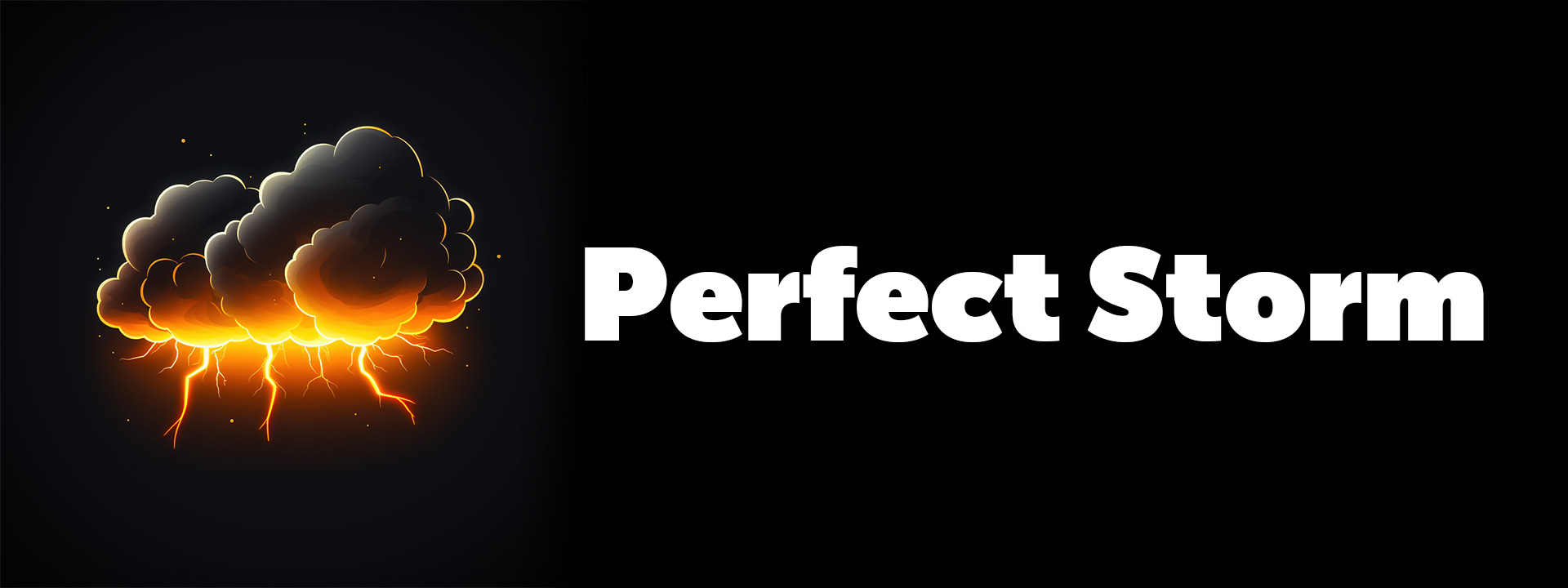Navigating the Maze: Embrace the Power of Critical Thinking
Life can sometimes feel like navigating a maze in pitch darkness. We stumble upon problems, large and small, that seem impossible, leaving us feeling overwhelmed and helpless. It’s a struggle, no doubt about it. But it’s also an integral part of our professional journey, and how we approach these challenges can define our career trajectory.
Enter the power of critical thinking, a beacon of light in the confusing labyrinth of our working lives. Critical thinking allows us to dissect problems, explore different perspectives, and devise effective solutions. It’s not just about ‘what’ but ‘how’ to think, a skill that transcends the boundaries of our jobs and seeps into every aspect of our lives. This article is your compass, guiding you through honing your critical thinking abilities and turning problems into stepping stones for growth.
Remember, it’s okay to feel anxious or worried about facing challenges. But, with this article’s tools and insights, you’ll be better equipped to turn those anxieties into action. Read on to empower yourself with the skill to make sense of problems and persevere in solving them. Mastering this will help you survive and thrive in the face of adversity. It’s time to step out of the darkness and into the light.
Table of Contents
Understanding the Concept of Critical Thinking
Hey there, I get it. The term “critical thinking” might sound a little daunting, right? You’re probably imagining a group of scholars in a room filled with books, solving complex problems. But let me assure you, it’s more intimidating than it seems. It’s a skill deeply ingrained in our everyday lives, and mastering it can catapult your problem-solving abilities to a whole new level.
Definition: critical thinking and its importance in problem-solving
So, what is critical thinking? Simply put, it means evaluating information and arguments in a disciplined way. It involves analyzing facts, establishing clear and rational thoughts, and understanding the logical connection between ideas. It’s not about being negative or hypercritical; it’s about being curious, open-minded, and analytical.
Critical thinking is like a secret weapon in problem-solving. It allows you to understand the problem in depth, evaluate different solutions, and choose the most effective one. It’s like being a detective in your own life, always seeking the truth and the best outcome. When you think critically, you don’t just accept things at face value; you dive more profoundly, and that’s where the magic happens.
Key elements of critical thinking
Let’s break down the major components that form the base of critical thinking:
- Interpretation: This involves understanding the information you receive. It’s not just about what you hear or read but comprehending the underlying meaning or implication.
- Analysis: You break down complex information into smaller, manageable parts for better understanding.
- Inference: This is about drawing conclusions based on your analyzed information.
- Evaluation: Here, you assess the credibility of the source of information and the quality of the conclusions you’ve drawn.
- Explanation: This involves clearly and concisely communicating your findings.
- Self-regulation: This is about being aware of your thinking process and biases and improving upon them.
Mastering these elements can take your problem-solving skills from average to exceptional. And who wants to be something other than outstanding, right?
Misconceptions about critical thinking
Now, let’s clear up some common misunderstandings about critical thinking.
- Misconception 1: Critical thinking is purely negative. No, it’s not about being negative or criticizing everything. It’s about being analytical and open-minded.
- Misconception 2: Critical thinking is innate and can’t be developed. Wrong! Just like any other skill, it can be created with practice.
- Misconception 3: Critical thinking is only for complex problems. Not true. It’s helpful in everyday situations, too, from deciding what to eat for breakfast to choosing the best route to work.
So there you have it. Critical thinking may seem challenging at first, but once you get the hang of it, you’ll see a positive change in your problem-solving skills. And remember, it’s a journey, not a destination. So, keep exploring, keep questioning, and keep improving. You’ve got this!
The Role of Perseverance in Problem-Solving
Defining Perseverance
Perseverance, my friends, is that gritty determination that keeps you going even when the going gets tough. In problem-solving, it’s the tenacity to keep trying different solutions until you find the one that works. It’s like being a detective committed to cracking a case, giving up when the puzzle is solved. I know it can be challenging. But remember, it’s not about never falling, but about getting up every time we do.
The Importance of Perseverance
Why is perseverance so crucial? Well, let’s be honest. Problems and challenges are a part of life, whether we like it or not. And guess what? They’re only sometimes easy to solve. But here’s the thing: the key to solving these problems is not always being the smartest or the fastest but often being the most persistent.
Perseverance allows us to stay focused, to keep pushing, and to see each failure as a stepping stone toward success. It’s about resilience, patience, and the belief that our efforts will pay off. And trust me, they will. Thomas Edison once said, “Our greatest weakness lies in giving up. The most certain way to succeed is to try just once more.”
Overcoming The Fear of Failure
Let’s talk about that nagging fear of failure. It’s a tough one, I know. It can paralyze us, make us doubt ourselves, and even stop us from trying. But remember, failure is not the opposite of success; it’s part of the journey to success. Here are a few strategies to manage this fear and encourage perseverance:
- Embrace the possibility of failure. It’s okay to fail. It’s necessary. Every failure is an opportunity to learn and grow.
- Reframe your mindset. Instead of seeing problems as threats, see them as challenges to be conquered.
- Take small steps. Instead of attempting to solve the whole problem simultaneously, break it into manageable parts. Celebrate small victories along the way to keep yourself motivated.
- Practice self-compassion. Be kind to yourself when things don’t go as planned. Remember, it’s okay to stumble. What’s important is to pick yourself up and keep going.
Remember, perseverance is like a muscle. The more we use it, the stronger it gets. So next time you face a problem, don’t shy away. Embrace, tackle, and remember that every step you take, no matter how small, is a step towards your goal. You’ve got this!
Steps to Develop Critical Thinking for Problem Solving
Hey there, I understand that problem-solving can be quite a challenge sometimes. We often find ourselves stuck, needing to learn how to approach a problem or how to find the best solution. But don’t worry—you’re not alone. The key to overcoming these hurdles lies in developing our critical thinking skills. This involves self-awareness, evaluation, and effective decision-making.

Self-awareness: Recognizing and understanding problems
First things first, self-awareness. It may seem a simple concept, but it’s fundamentally essential. Recognizing the problem is the first step toward its solution; this is where self-awareness plays a vital role.
Self-awareness means knowing your strengths, weaknesses, and biases. When you understand these, you can see the problem objectively. You can identify your blind spots and challenge your preconceived notions. This clarity allows you to recognize the problem and understand it thoroughly.
Remember, having biases and weaknesses is entirely okay—we all do. The key is knowing them and learning how to navigate them effectively.
Evaluation: Critically analyzing information and situations
Next up is evaluation. Once you’ve recognized and understood the problem, it’s time to gather information and analyze it critically.
Not all information is created equal, and it’s crucial to discern what’s helpful and not. Look at the facts, scrutinize the sources, and consider different perspectives. Ask yourself, “Does this make sense?” or “Is there a better way to look at this?” This critical analysis will help you filter out irrelevant information and focus on what matters.
Sometimes, this process can be exhausting. But hang in there! It’s a crucial step towards finding the right solution.
Decision-making: Using critical thinking for effective solutions
Finally, we have decision-making. After all your hard work of recognizing, understanding, and evaluating, it’s time to make decisions.
Critical thinking helps you weigh different options, consider their implications, and choose the most effective solution. It’s not about jumping to the quickest solution but finding the best outcome.
It’s okay if you’re feeling nervous. Decision-making can be daunting, especially when the stakes are high. But remember, you’ve already done the hard part. Trust in your understanding of the problem and your evaluation of the information. You have the tools to make an informed decision.
There you have it, the steps to develop critical thinking for problem-solving. Remember, it’s a process, and taking it one step at a time is okay. You’re doing great, and you’ve got this!
Practical Techniques to Persevere in Solving Problems
Life is a series of challenges and problems. Sometimes, they can feel overwhelming, and you might think, “I can’t do this.” But don’t worry! Everyone feels that way at times. I’m here to share some practical techniques to persevere in solving problems. Stick with me, and we’ll navigate this journey together.

Embracing Challenges
When faced with a complex problem, it’s natural to feel anxiety or even dread. Let’s try to shift our perspective a bit. Problems can be opportunities in disguise, pushing us to learn, adapt, and grow. How can we stay motivated amidst these challenges? Here are a few tips:
- Remember your goal. Remind yourself of why you’re tackling this problem. Visualize the feeling of accomplishment you’ll have when you solve it. This can provide a powerful motivation boost.
- Break it down. Large problems can seem daunting. Try breaking them into smaller, manageable tasks. This makes them less intimidating and gives you a clear path forward.
- Celebrate small wins. Every step forward, no matter how small, is progress. Celebrate these moments. They’ll fuel your motivation to continue.
Persistence Strategies
Staying persistent can be challenging, especially when a solution seems elusive. But remember, the key to solving any problem is not giving up. Here are a few strategies to maintain your persistence:
- Practice patience. Problem-solving often takes time. Patience is your ally. It may not happen overnight, but with patience, progress will come.
- Stay positive. A positive mindset can make a world of difference. It helps you see possibilities instead of obstacles. Remember, every problem has a solution.
- Seek support. Don’t hesitate to ask for help. A fresh perspective can often shed new light on a problem.
Using Failure as a Learning Tool
Failure or setbacks can be challenging to swallow. But let’s not see them as the end of the road. Instead, allow’s view them as stepping stones towards success. Here’s how:
- Acknowledge your mistakes. It’s okay to make mistakes. They’re part of the learning process. Acknowledge them, but don’t dwell on them.
- Analyze what went wrong. Try to understand what led to the failure. This will help you avoid similar pitfalls in the future.
- Use it as a learning opportunity. Every failure carries a lesson. Identify it, learn from it, and use it to improve your problem-solving skills.
Remember, it’s okay to struggle with problem-solving. It’s a skill that takes time to develop. Keep these techniques in mind, and with practice, you’ll become a more effective problem solver. You’ve got this!
Wrapping It Up
As we navigate towards the conclusion of this article, let’s take a moment to reflect on the key points we’ve explored. We’ve delved into the importance of harnessing your critical thinking abilities and the need for perseverance in all areas of life. We’ve also discussed practical strategies to cultivate these essential skills. It’s been a journey full of insights and valuable lessons.
I understand that the road to personal and professional growth can often be riddled with obstacles and self-doubt. You might feel overwhelmed or even anxious about the challenges ahead. But remember, Rome wasn’t built in a day. Developing your critical thinking skills and fostering perseverance is a process, and like any other process, it requires patience and practice. It’s okay to stumble and fall along the way. The important thing is to keep going and keep striving.
Now, it’s over to you. Please apply the insights and advice shared in this article to your daily problem-solving endeavors. Empower yourself with these tools; with time, you’ll see a significant transformation in your approach to challenges. Remember, the only way to actualize your potential is to put theory into practice. So, go out there and conquer your world with renewed vigor and resilience because you are the only person who can shape your future.
Key Takeaways: The Critical Thinker’s Mantra
| Key Takeaways | Description |
|---|---|
| Understanding the Problem | Before attempting to solve a problem, it is important to understand it fully. This means examining all aspects of the problem, its root causes, and potential implications. |
| Perseverance in Problem-Solving | Challenges are a part of problem-solving. Perseverance is the key to overcoming these challenges and finding a solution. Don’t give up easily. |
| Role of Critical Thinking | Critical thinking enables one to analyze a problem, evaluate different solutions, and choose the most effective one. It’s an essential skill in problem-solving. |
| Being Open-Minded | It is important to be open to different perspectives and possibilities when solving problems. Sometimes, the best solution may not be the most obvious one. |
| Accepting Failure as a Learning Opportunity | Not all problem-solving attempts will be successful. However, each failure is an opportunity to learn and improve future problem-solving efforts. |
| Importance of Patience | Problem-solving can be a long process, requiring patience. It may result in missing key details or jumping to incorrect conclusions. |
| Effective Communication | Clear and effective communication is key, especially when working in a team. It ensures everyone understands the problem and the proposed solutions. |
| Seeking Help When Needed | If a problem seems too complex to handle alone, don’t hesitate to seek help. Collaborating with others can bring fresh perspectives and potential solutions. |
Tips for Making Sense of Problems and Solving Them
We understand – facing problems can be overwhelming. It feels like a mountain in front of you. But you’re not alone in this. Here’s a list of practical tips to help you navigate your problems, persevere, and become stronger.
- Acknowledge the Problem: It’s okay. It’s normal. Everyone encounters problems. Embrace your situation. It’s the first step towards solving it.
- Define the Problem: Understand what you’re dealing with. Define it clearly. Use simple, specific words. It will help you see the problem for what it truly is.
- Break it Down: Big issues can seem daunting. Break them down into smaller, manageable parts. Tackle one piece at a time. It’s easier this way.
- Research: Get all the information you can. Understand the ins and outs of your problem. Knowledge is power, remember?
- Brainstorm Solutions: Think about possible solutions. Write them down. Don’t dismiss any idea at this stage.
- Evaluate and Choose: Consider the pros and cons of each solution. Choose the one that makes the most sense.
- Take Action: Don’t just plan. Act. Implement your chosen solution. Remember, progress happens one step at a time.
- Reflect and Learn: Reflect after the problem is solved. What did you learn? What can you do better next time? Remember, every issue is a stepping stone to growth.
- Stay Positive: Maintain a positive attitude. It’s tough, we know. But remember, every problem has a solution. And you can find it.
- Persevere: Don’t give up. Perseverance is key. It might take time, but remember, the darkest hour is just before the dawn.
Remember, it’s okay to ask for help. You’re not alone in this journey. We all face problems and overcome them. And so can you. Stay strong, stay positive, and keep problem-solving!

